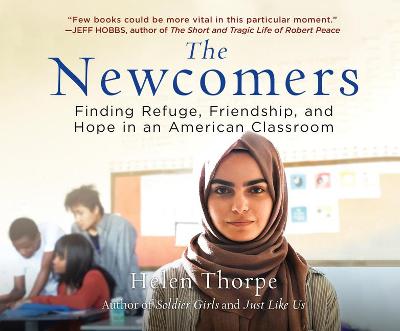
Heather
Written on Dec 19, 2017
I've often wondered what it would be like to move to the U.S. from a non-English speaking country and have to learn to survive here. This is a book that answers those questions. I think this should be required reading for anyone who wants to talk intelligently about the immigration debate in the U.S.
The author spends 18 months with a group of teenagers who are in a Newcomers class in a Denver high school. All of them are recent immigrants and have tested at the bottom level of English language proficiency. They represent most of the major conflict zones on the planet - The Democratic Republic of Congo, Syria, Iraq, Burma, Central America, Eritrea. The school year starts with learning how to introduce yourself in English. Most of the kids are stumped.
One of the things I found interesting in this book was the transparency of the author's process. She is writing about minors who have all experienced a great deal of upheaval and trauma in their lives. She explains how she approaches the kids with a translator in their home language to ask if she can include their stories in the book. There are kids who say no at this point and she respects that. If they agreed, she sent home a letter written in their language to their parents that requested permission to interview the children and requested to interview them. If permission is given, then home visits are started with an interpreter. In spite of all these precautions, there are still communication errors and just the plain inability of an American to truly understand the lives that refugees have led. She discusses her thought process about what questions to ask about their backgrounds. When does reporting the story just become an excuse to pry into things for the sake of the sensational details? She talks about when she chose to walk away from lines of questioning that are relevant to the story but would lead to retraumatizing the people being interviewed.
For the families that agreed to participate, it opens a window in to the lives in war zones. Hearing what they had to endure before fleeing their homes was heartbreaking. There are Iraqis who worked with the U.S. Army and then were left behind. A Central American female police officer was targeted for murder after arresting gang members and when they couldn't get to her they starting threatening her children. A family with 10 children had to walk out of the DRC to avoid repeated violence. Some of the kids were born in refugee camps. Most are already multi-lingual.
Life in the U.S. isn't easy. Resettlement agencies help but families are required to be self-supporting within 4 months of arrival. That's hard when you don't speak the language and can't get a good job. I'm surprised how many families did it. Other families' stories show how one small setback can upset their whole resettlement journey.
The importance of this story is underscored by the fact that it takes place from September 2015 to December 2016. Reading about the rise of Donald Trump as it relates to these families was stressful all over again. Incidents of racism rise on public transport as the election takes place. Court cases to receive asylum for Central American children are suddenly in doubt. Family members scheduled to arrive from Somalia are suddenly turned back at the airport.
The author does go to the DRC to see where the family that she knew from Denver came from. She traces their route to refugee camp and meets friends and family members who have been left behind.
This is an ultimately hopeful book as you see how far the kids come in 18 months. Some go from silent observers on day 1 to being a part of the student government a year later. Others are still struggling with English but are able to have full conversations. No one who reads about these families would think they are lazy and trying to work the system. This is a book I'd love to force all Trump fans to listen to in order to see if these people's realities align with their idea of what immigrants are.
This review was originally posted on Based On A True Story
